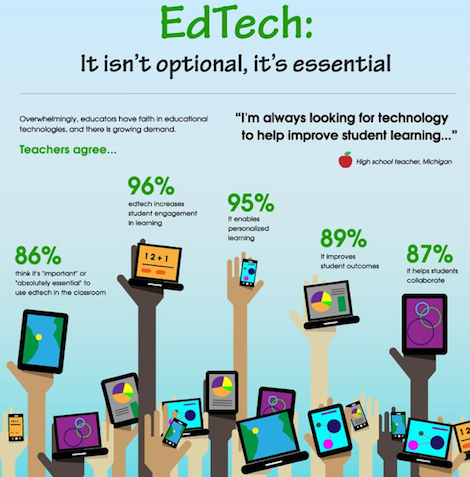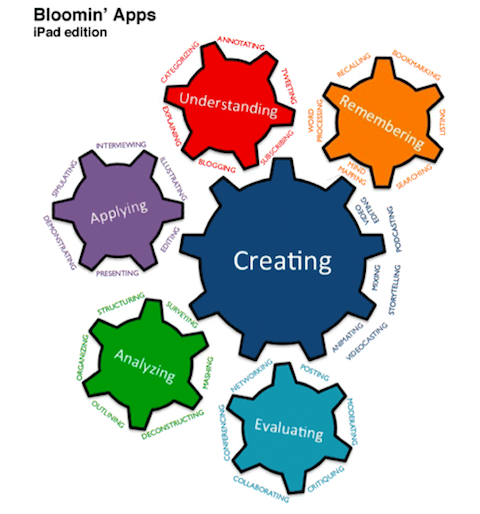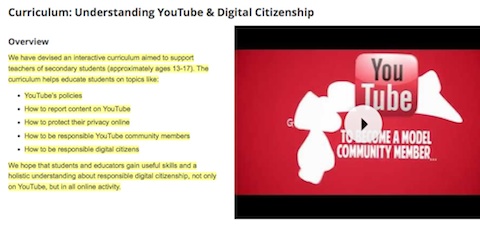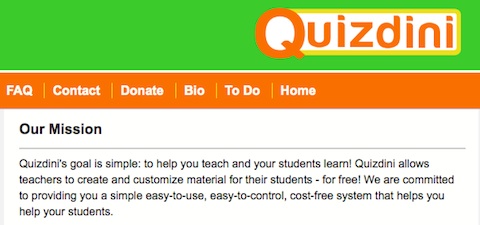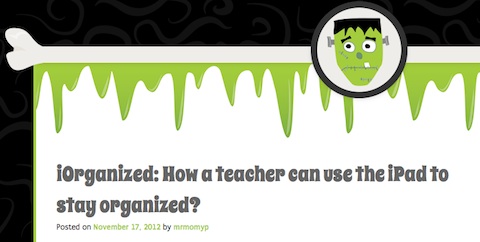Every Teacher Librarian needs a kit like this. Craig Badura demonstrates, in an ed tech blog post, how to use everyday household items to practically and visually guide students on aspects of digital citizenship of which they need to be aware. This kit could be expanded or altered to suit.
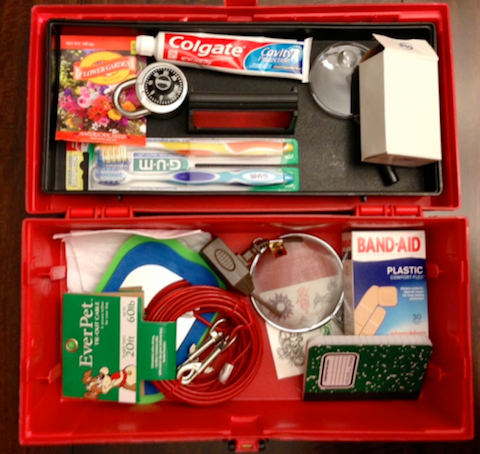
Category Archives: Teaching & Learning
Technology in the classroom – not optional
This infographic by ‘graphite’ shows how the use of educational technology is favoured yet also how many teachers and institutions have difficulty in making its use a reality in the classroom. Educators have perceived barriers that are discussed here – budget restraints, time for teachers to learn to use and to implement technology into their practice.
21st Century Education – Animation
This animation was produced on behalf of the Australian delegation to the Global Education Leadership Programme (GELP). It makes the case for making big changes in education, to keep up with the big changes that are taking place in society.
Year 3 share their Guided Inquiry experience with their parents
Last Friday afternoon two classes of excited Year 3 students came to the IRC with their parents to show them their work. After the teachers spoke of how the Guided Inquiry process had worked for them in practice, some of the students’ Vokis were demonstrated on the whiteboard. The parents then spent time with their child looking at their bookwork, their PowerPoints and their Vokis.
The students had used the Guided Inquiry process, with Teacher Librarian support, to investigate their personally selected aspect of the human body. Besides learning about the Human Body they also learned a lot of reading skills, writing skills, thinking skills and ICT skills.
Books were the main source of information as our IRC collection has so many good books suitable for this age group. The students read a lot about the human body before selecting their favourite aspect to study. Writing their own questions was a lot of fun and some fabulous ideas emerged!
The practical science experiments for this unit were also suggested and created by the students!
Finally after they had investigated and written answers to their questions, they made a PowerPoint to teach the other students about their work. Then, for fun, they made a Voki summary. This also incidentally taught them a lot about spelling and punctuation as they tried to make their computer generated avatars ‘speak’ their presentations.
Cardboard projects of the past cannot be compared to this exciting learning process!


Understanding Creative Commons – Infographic
Our responsibilities for using information, pictures and anything we find to share are clearly outlined in this infographic about Creative Commons showing all levels of criteria and rules for ownership and sharing.
http://www.educatorstechnology.com/2013/07/a-must-see-graphic-on-creative-commons.html
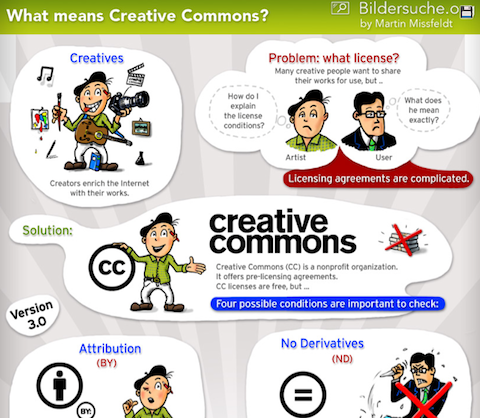
Bloom’s Taxonomy in action
The following video illustrates activities at each level of Bloom’s Taxonomy in a classroom setting – activities and instruction. Theory and more ideas (including digital support) can be found at these sites – thanks for the links goes to Jennie Bales
Bloom’s Taxonomy Blooms Digitally
Bloom’s Digital Taxonomy Resources
Our Year 10 students will be incorporating this theory into their Guided Inquiry unit of work this term. It will assist them to construct a deep question for their research, analyse their findings and create solutions to selected issues. Bloom’s taxonomy can also be used by teachers as a tool for differentiation and assessment.
iPad Apps for Bloom’s Revised Taxonomy
Kathy Schrock has revised her former Bloomin’ Apps for iPads into a format showing the “interlocking of the cognitive processes”. Appropriate Google Apps and Web2 Apps are also charted below these.
Since the cognitive processes are meant to be used when necessary, and any learner goes up and down the categories as they create new knowledge, I was thinking another type of image might be more explanatory.
Sir Ken Robinson – TED talks education
Sir Ken Robinson outlines 3 principles crucial for the human mind to flourish — and how current education culture works against them. In a funny, stirring talk he tells us how to get out of the educational “death valley” we now face, and how to nurture our youngest generations with a climate of possibility.
Creativity expert Sir Ken Robinson challenges the way we’re educating our children. He champions a radical rethink of our school systems, to cultivate creativity and acknowledge multiple types of intelligence.
Splash: ABC site supporting Australian Curriculum
This site is rich in activities across English, Mathematics, Science and History, supporting learning for Australian students in Years K-10
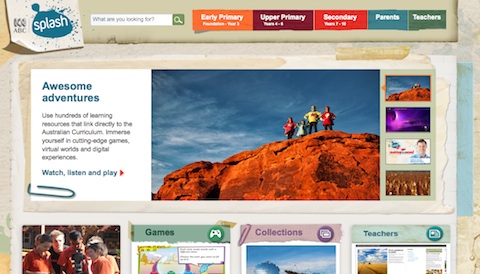
Watch, listen and play videos, audio clips and games. The ABC and ESA have teamed up to bring primary and secondary students and teachers world-class Australian resources.
Interactive Lessons on YouTube and Online Responsibility
There has been a very noticeable shift for Secondary students to search YouTube for resources. TED, TEDEd, Vimeo and other sources are also searched regularly by our students.
Google Education have provided interactive lessons for Secondary Students to assist in teaching responsible digital citizenship particularly in the use of YouTube or other online resources.
Teacher resources of videos, slides and summaries for each lesson are available. The topics include:
YouTube’s policies
How to report content on YouTube
How to protect their privacy online
How to be responsible YouTube community members
How to be responsible digital citizens
Make your own quizes – Quizdini
Digital Fluency
We used to talk about Digital Literacy… Now ‘digital fluency’ goes a step further to include utilising and integrating digital skills into everyday communication, problem solving and learning. How teaching and learning has changed! Now the teacher must also ensure he or she is constantly upskilling to the point of ‘fluency’ then changing pedagogues in order to be relevant.
21Century Skills Framework for Project Based Learning
The Buck Institute for Education (BIE) is dedicated to improving 21st Century teaching and learning throughout the world by creating and disseminating products, practices and knowledge for effective Project Based Learning (PBL).
This skills framework contains definitions for each skill and sets them against the focus for which it needs to be developed. Project based learning has much in common with the Guided Inquiry approach we follow at Broughton and these definitions assist in making some of the 21C skills ‘jargon’ clear as more teachers learn new pedagogues.
Critical Thinking Skills – Evaluating information under the surface
This series of video clips by technyou were funded by the Australian Government Department of Innovation, Industry, Science and Research.
Training to think critically can be carried out through the integration of Information Skills across the curriculum. The Teacher Librarian plays a major role in enabling this by teaching collaboratively with teachers across curriculum areas and integrating critical thinking skills into the synthesis of information to build new arguments and knowledge to share creatively.
Critical Thinking Part 1: A Valuable Argument
Critical Thinking Part 2 : Broken Logic
Critical Thinking Part 3 : The Man who was Made of Straw
Critical Thinking Part 4 : Getting Personal

